The Dickson Experimental Sound Film is a film made by William Dickson in late 1894 or early 1895. It is the first known film with live-recorded sound and appears to be the first motion picture made for the Kinetophone, the proto-sound-film system developed by Dickson and Thomas Edison. (The Kinetophone, consisting of a Kinetoscope accompanied by a cylinder-playing phonograph, was not a true sound-film system, for there was no attempt to synchronize picture and sound throughout playback.) The film was produced at the "Black Maria", Edison's New Jersey film studio. There is no evidence that it was ever exhibited in its original format. Newly digitized and restored, it is the only surviving Kinetophone film with live-recorded sound.
| The Dickson Experimental Sound Film | |
|---|---|
Frame from restored version of The Dickson Experimental Sound Film (1894/95) | |
| Directed by | William Dickson |
| Starring | William Dickson |
| Music by | Robert Planquette |
| Cinematography | William Heise |
| Distributed by | Thomas A. Edison, Inc. |
Running time | ?17 seconds |
| Country | United States |
The film features Dickson playing a violin into a recording horn for an off-camera wax cylinder. The melody is from a barcarolle, "Song of the Cabin Boy", from Les Cloches de Corneville (literally The Bells of Corneville; presented in English-speaking countries as The Chimes of Normandy), a light opera composed by Robert Planquette in 1877. In front of Dickson, two men dance to the music. In the final seconds, a fourth man briefly crosses from left to right behind the horn. The running time of the restored film is seventeen seconds; the accompanying cylinder contains approximately two minutes of sound, including twenty-three seconds of violin music, encompassing the film's soundtrack. After its restoration in 2000, The Dickson Experimental Sound Film was selected for inclusion in the United States National Film Registry.
Screenplay
A soundless 35mm nitrate print of the movie, described as precisely forty feet long, was acquired by the Museum of Modern Art and transferred to safety film in 1942. Thomas A. Edison, Incorporated donated the Edison Laboratory to the U.S. National Park Service in 1956. The soundtrack was inventoried at the Edison National Historic Site in the early 1960s, when a wax cylinder in a metal canister labeled "Dickson—Violin by W.K.L. Dixon with Kineto" was found in the music room of the Edison laboratory. In 1964, researchers opened the canister only to find that the cylinder was broken in two; that year, as well, all nitrate film materials remaining at the facility were removed to the Library of Congress for conservation. Among the filmstrips was a print that the Library of Congress catalogued as Dickson Violin. According to Patrick Loughney, the library's film and TV curator, this print is "thirty-nine feet and fourteen frames ."
The connection between film and cylinder was not made until 1998, when Loughney and Edison NHS sound recordings curator Jerry Fabris arranged for the cylinder to be repaired and its contents recovered at the Rodgers and Hammerstein Archive of Recorded Sound in New York. A new reel-to-reel master was created, allowing for fidelity reproduction onto digital audio tape. As the library was not equipped to synchronize the recovered soundtrack with the film element, producer and restoration specialist Rick Schmidlin suggested that award-winning film editor Walter Murch be enlisted on the project (the two had worked together on the 1998 restoration of Orson Welles's Touch of Evil). Murch was given the short piece of film and the two minutes of sound recovered from the cylinder to work with. By digitally converting the film and editing the media together on an Avid system, Murch synchronized the visual and audio elements.
On the cylinder, before the camera starts rolling, a man's voice can be heard to say, "Are the rest of you ready? Go ahead!" This extra sound is included on the version of the film that was distributed in the early 2000s. However, since filming had not yet begun when the words were uttered, this cannot be claimed as the first incidence of the spoken word on film.
One question that remains unanswered is how the eventual running time of just over 17 seconds was arrived at. Per the curatorial reports, the 35-mm prints have a standard 16 frames per foot of film—39 feet (12 m) plus 14 frames thus equals a total of 638 frames. Murch describes the film as having been shot at 40 frames per second (fps); Loughney describes it as 46 fps. At 40 fps, 638 frames would run 15.95 seconds, which should be the maximum length of the restored film if all other reports are correct; as Loughney notes, at 46 fps, the film would last 13.86 seconds. If the latter figure is correct, as many as 9 seconds of film are missing from both extant prints if the entire violin performance was filmed. On the basis of his own tests of eighteen Kinetoscope films, scholar Gordon Hendricks argued that no Kinetoscope films were shot at 46 fps, making the speed of 40 fps reported by Murch more likely. Yet there is still a difference of more than a second between the maximum potential running time at that speed and the actual duration of the film as digitized by Murch. That 17-second running time works out to an average camera speed of approximately 37.5 fps, a significant difference from Murch's report.
In his book The Celluloid Closet (1981), film historian Vito Russo discusses the film, claiming, without attribution, that it was titled The Gay Brothers. Russo's unsupported naming of the film has been adopted widely online and in at least three books, and his assertions that the film's content is homosexual are frequently echoed. In addition to there being no evidence for the title Russo gives the film, in fact the word "gay" was not generally used as a synonym for "homosexual" at the time the film was made. There is also no evidence that Dickson intended to present the men—presumably employees of the Edison studio—as a romantic couple. Given the lyrics of the song Dickson plays, which describes life at sea without women, it is more plausible that he intended a joke about the virtually all-male environment of the Black Maria. It was also quite common in the 19th century for men to dance with men without homosexual overtones being perceived; all-male "stag dances," for instance, were a standard part of life in the 19th century U.S. Army and were even part of the curriculum at West Point. Still, this may be seen as one of the earliest examples of same-sex imagery in the cinema. An excerpt of the film is included in the documentary based on Russo's book, also titled The Celluloid Closet (1995).
- Treasures from American Film Archives
Published
- Dixon, Wheeler Winston (2003). Straight: Constructions of Heterosexuality in the Cinema (Albany: State University of New York Press, 2003). ISBN 0-7914-5623-4
- Hendricks, Gordon (1966). The Kinetoscope: America's First Commercially Successful Motion Picture Exhibitor. New York: Theodore Gaus' Sons. Reprinted in Hendricks, Gordon (1972). Origins of the American Film. New York: Arno Press/New York Times.
Watch movie The Dickson Experimental Sound Film online on Amazon
Watch movie The Dickson Experimental Sound Film online
Watch The Movie On PrimePrithvi Full HD Movie Download
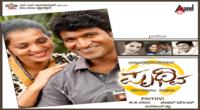
Awaargi Full HD Movie Download
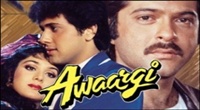
Aitbaar (1985) Full HD Movie Download
.jpg)
Navagraha Full HD Movie Download
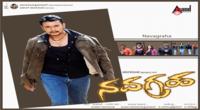
Private Secretary Full HD Movie Download
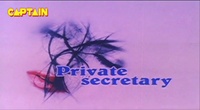
Patita Full HD Movie Download
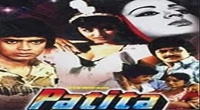
Ardhangini Full HD Movie Download
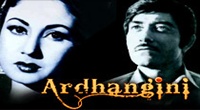
Karma (Malayalam) Full HD Movie Download
.jpg)
Joru Ka Gulam (1972) Full HD Movie Download
.jpg)
Dil-E-Nadan (1982) Full HD Movie Download
.jpg)
Aa Janhare Lekhiba Naa Full HD Movie Download
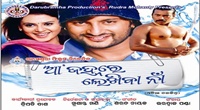
Dhanare Rakhibu Sapatha Mora Full HD Movie Download
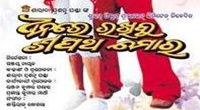
Summer School Full HD Movie Download
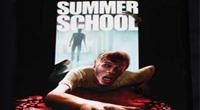
The Curious Case of Benjamin Button Full HD Movie Download
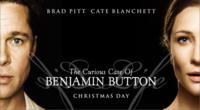
Jigar Baaz Full HD Movie Download
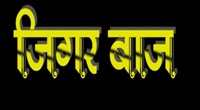
Jyoti Full HD Movie Download
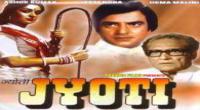
Youve Got Mail Full HD Movie Download

Bharya Biddalu Full HD Movie Download
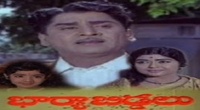
Khaidi Kalidasu Full HD Movie Download
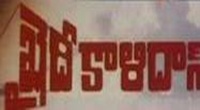
Maarina Manishi Full HD Movie Download
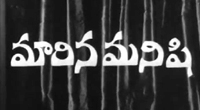
Tiger Ramadu Full HD Movie Download
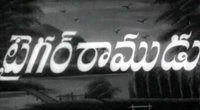
Download latest Movie from bollywood
- 1> baaghi 3
- 2> THE SKY IS PINK MOVIE FULL STORY AND REVIEW
- 3> Luka Chuppi
- 4> TO ALL THE BOYS I’VE LOVED BEFORE
- 5> Kabir Singh
- 6> Street Dancer 3D
- 7> Simmba
- 8> Gone Girl
- 9> The Girl Who Lived
- 10> Ludo
- 11> DILWALE DULHANIA LE JAYENGE
- 12> GUILTY
- 13> The Godfather
- 14> Adventures of Rusty
- 15> Sooryavanshi
- 16> Satyameva Jayate 2
- 17> Thappad
- 18> Bhool Bhulaiyaa 2
- 19> KGFChapter 2
- 20> Mardaani 2
- 21> Pinjar
- 22> Shivaji maharaj
- 23> Ek Villian 2
- 24> Hungama 2
- 25> Divergent
- 26> Mumbai Saga
- 27> The Internship
- 28> HIT (telugu)
- 29> Panga
- 30> The perfect date
- 31> 16 December
- 32> Gopala Gopala (Telugu)
- 33> Brahmastra
- 34> Gangubai Kathiawadi
- 35> Manmadhudu
- 36> Nenu local
- 37> Mahanati
- 38> Shatamanam bavathi
- 39> Lagaan
- 40> After
- 41> MOM
- 42> Shamshera
- 43> Raguvaran BTech
- 44> Khakee
- 45> The villain
- 46> OM
- 47> Mr. perfect
- 48> Bueatifull mind
- 49> Hichki
- 50> Gabbar Singh
- 51> Jogi
- 52> Before Sunrise
- 53> Before Sunset
- 54> Before Midnight
- 55> The Big Bull
- 56> Top Gun: Maverick
- 57> The Purge
- 58> The Sky is Pink
- 59> Laxmmi Bomb
- 60> Sadak 2
- 61> Sufna
- 62> Prithviraj
- 63> PK
- 64> Coolie No 1(2020)
- 65> Black Widow
- 66> Dear Zindagi
- 67> Dil Bechara
- 68> PHIR HERA PHERI
- 69> WAR
- 70> Dostana
- 71> RRR: Roudram Ranam Rudhiram
- 72> Maidan
- 73> Dabbang 3
- 74> Chhalaang
- 75> life as we know it
- 76> SherShaah
- 77> Sandeep Aur Pinky Faraar
- 78> Event Horizon
- 79> 83
- 80> Radhe: Your Most Wanted Bhai
- 81> Gunjan Saxena: The Kargil Girl
- 82> Mr India
- 83> Vivah
- 84> Anokha Bandhan
- 85> Ghost
- 86> Bhoot: Part One - The Haunted Ship
- 87> Haseen Dilruba
- 88> Laal Singh Chaddha
- 89> Qismat
- 90> Rajput
- 91> Drive
- 92> Dil Chahta Hai
- 93> Dil Ki Baazi
- 94> Dil Ka Rishta
- 95> Teesri Manzil
- 96> Dil
- 97> Love Aaj Kal
- 98> Khaali Peeli
- 99> Bunty Aur Babli 2
- 100> Atrangi Re
- 101> Gulabo Sitabo
- 102> Jodi
- 103> Suraj Pe Mangal Bhari
- 104> Deewana
- 105> Attack
- 106> Sardar Udham Singh
- 107> Toofan
- 108> THE LOVEBIRDS
- 109> Jersey
- 110> Ginny Weds Sunny
- 111> Thalaivi
- 112> Shiddat
- 113> Angels vs Zombies
- 114> Koi Mil Gya
- 115> Thank God
- 116> Bhuj: The Pride of India
- 117> Hum Aapke Hain Kaun
- 118> The Platform
- 119> Bird Box
- 120> Roohi Afzana
- 121> Torbaaz
- 122> Nikamma
- 123> World War Z
- 124> Extraction
- 125> Train to Busan
- 126> Life of Pi
- 127> SHAADI MEIN JROOR AANA
- 128> Himmat Aur Mehnat
- 129> To All The Boys: P.S. I Still Love You
- 130> Mimi
- 131> Good Newwz
- 132> Shubh Mangal Zyada Saavdhan
- 133> Raabta
- 134> Harry Potter and the Philosopher's Stone
- 135> Harry Potter and the Chamber of Secrets
- 136> Chhapaak
- 137> War of the Worlds
- 138> Harry Potter and the Prisoner of Azkaban
- 139> Harry Potter and the Goblet of Fire
- 140> MURDER MYSTERY
- 141> Shakuntala Devi
- 142> Bachchan Pandey
- 143> Jayeshbhai Jordar
- 144> Sheer Qorma
- 145> Saina
- 146> 'O' Pushpa I hate tears
- 147> Kedarnath
- 148> MS Dhoni The Untold Story
- 149> Chhichhore
- 150> Badhaai Ho
- 151> Unstoppable
- 152> Oz the Great And Powerful
- 153> The Girl on the Train
- 154> Haathi Mere Saathi 2020
- 155> The Conjuring: The Devil Made Me Do It
- 156> Gandhi Se Pehle Gandhi
- 157> The Song of Scorpions
- 158> Srimanthudu
- 159> Hello Guru Prema Kosame
- 160> Beauty and The Beast
- 161> Black Panther
- 162> Charlie and the Chocolate Factory
- 163> Bole Chudiyan
- 164> Fidaa
- 165> Duvvada Jagannadham
- 166> Bruce Lee: The Fighter
- 167> Hyper
- 168> Yaara
- 169> Red (2020)
- 170> Shivam
- 171> That Is Mahalakshmi
- 172> Nishabdham
- 173> Aashram 2020 web series
- 174> Laxmii
- 175> Mismatched
- 176> STUDENT OF THE YEAR 2
- 177> NAIL POLISH
- 178> Ramprasad Ki Tehrvi
- 179> KAAGAZ
- 180> 12 o Clock
- 181> The Power
- 182> bolo hau
- 183> Tribhanga
- 184> JAMUN
- 185> Madam Chief Minister
- 186> Maasaab
- 187> Aadhaar
- 188> Tanhaji
- 189> Bhaagi 3
- 190> Bhootnath
- 191> MALANG
- 192> Jai Mummy Di
- 193> Haathi Mere Saathi 2021
- 194> Shakeela
- 195> Unpaused
- 196> Annayya
- 197> Vamsoddharakudu
- 198> Mrugaraju
- 199> Narasimha Naidu
- 200> Sankranti
- 201> Manasu Maata Vinadhu
- 202> Anjaane
- 203> Apaharan
- 204> Bachke Rehna Re Baba
- 205> Bewafaa
- 206> Roohi
- 207> Radhe
- 208> Zindagi Khoobsoorat Hai
- 209> Yeh Mohabbat Hai
- 210> Yeh Kya Ho Raha Hai?
- 211> The Tomorrow War
- 212> DehradunDiary
- 213> Meri Shaadi Karaoo
- 214> Matruu Ki Bijlee Ka Mandola
- 215> No One Killed Jesica
- 216> Aag Ka Goola
- 217> Eight Million Dollars
- 218> Three Hundred
- 219> Cats and Dog
- 220> Decoy
- 221> Gold Rush
- 222> You Have Got Mail
- 223> Final Destination three
- 224> Tofan
- 225> Jungle
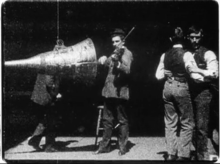 Story of movie The Dickson Experimental Sound Film :
Story of movie The Dickson Experimental Sound Film : 